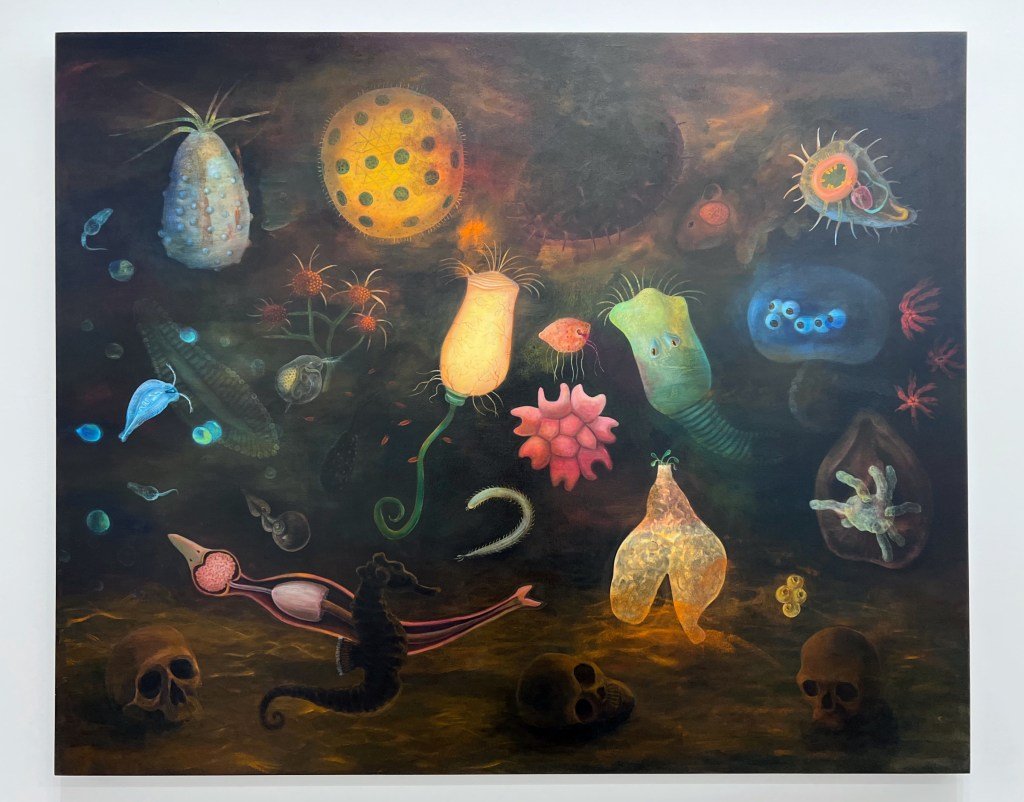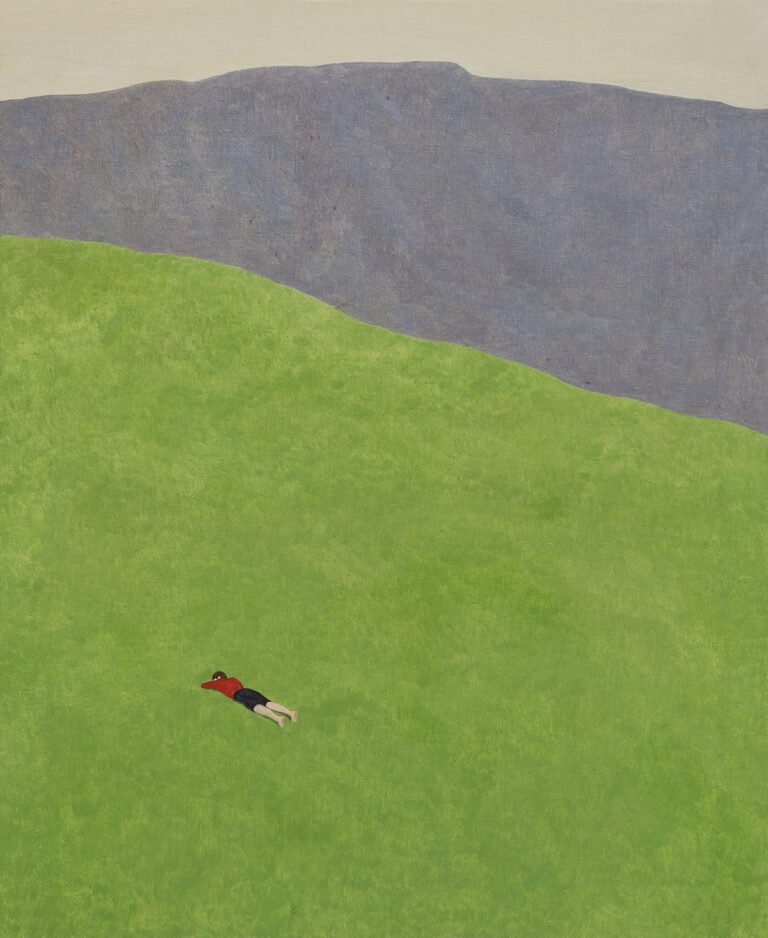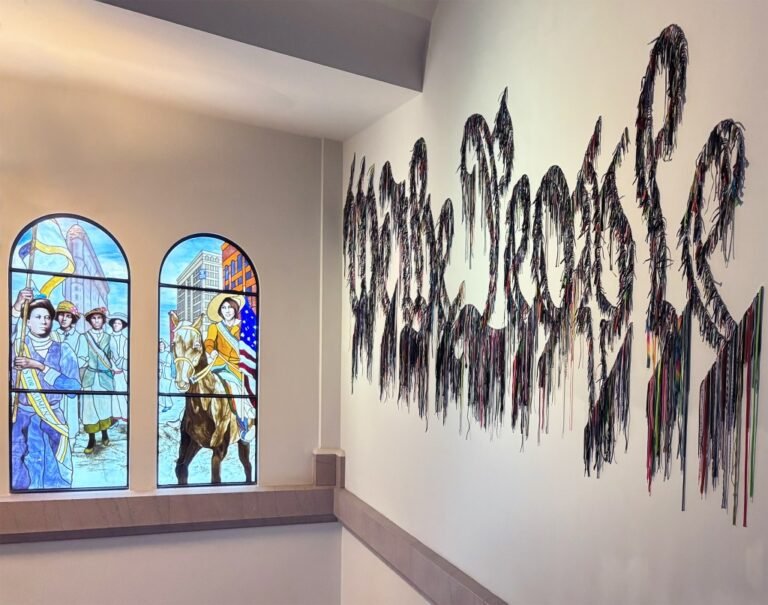

Renée Stout was born in Junction City, Kansas, to a creative family — a mother who did needlework, a father who was a mechanic and steelworker, and an uncle who painted. After they moved to Pittsburgh, Pennsylvania, she took weekend classes at the Carnegie Museum of Art, where she encountered Congolese nkisi nkondi, figurative and protective objects, often studded with nails, that house spirits who hunt down evildoers. She went on to receive her Bachelor of Fine Arts at Carnegie Mellon University, training as a photorealist painter, before working as a professional sign painter.
Elements of each part of that biography can be seen in the mixed-media paintings, sculptures, and installations in her current exhibition, Truth-telling, at Marc Straus gallery. These works draw from African and African diasporic histories, including her own, but they do not feel pedagogical. In fact, they’re so heavily laden with personal symbolism that viewing them can seem like looking into someone’s private life. And yet Stout’s work also recovers the cultic sense of art as simultaneously embedded in everyday life and conduits to magic, as if the works are tapped into some unseen undercurrent. For, as Jillian Steinhauer put it in her 2015 review of Stout for this magazine, art, too, is a bewitching artifice.


Stout’s assemblages have a retrofuturist, steampunk quality — dark metal, gauges, and other mechanical fixtures — mixed with elements drawn from African sculptures and diasporic traditions. “Ogun Power Object (Reactor, revisited)” (2007–25), for instance, is inscribed with a circuit diagram and studded with nails, with a titular reference to a warrior spirit of iron work. “A petition to the Ancestors” (2025), which recalls Yoruba twin sculptures in its doubled figuration, is thickly encrusted with acrylic except for a metal crank that appears polished from repeated use. It seems poised for some type of activation, and a pistol slung around the figures’ back offers a hint as to what that might look like.
Stout’s capacity for photorealism is also on view in several paintings across the exhibition, as is her penchant for Afrofuturism. In the square “Spell Diagram #12” (2025), neon green arrows point from the midpoint of each edge toward what seem to be three seed pods with thistles poking out of a white fibrous coating. Along each arrow is a set of numbers that appear to be years. Some feel obviously significant — 1619, when the first enslaved Africans were brutally taken into what would become the United States, or 1610, the year Galileo made major telescopic discoveries. Others are more difficult to place, such as 1591 or 1824. And I suspect one other — 7701 — marks a milestone to come, hopefully some type of liberation.

Indeed, it’s crucial to note that the magic of Stout’s artworks does not feel contingent on a viewer’s comprehension. Instead, it feels auratic, as if emitting an electrical current of meaning. That’s due in part to her distinctive visual vernacular — her neat, almost incantatory sign-painter’s writing; the dark, spectral palette of her abstract works; the opaque intentionality of her assemblages, which rewire ordinary things into uncanny objects that seem to have their own agency. I suspect that her assemblages in particular would emanate their distinct energy no matter where you encounter one — a thrift store, someone’s home, even outside on the curb.
For while Stout’s work draws from spiritual systems, the most fundamental source of her magic is the everyday world. That’s seen most clearly in the large-scale trompe l’oeil painting “Sketches on Old Paper” (2025), the key that unlocks the rest of this exhibition. It includes, for instance, something as simple as a written list of words she likes — which are, after all, symbols that we all use to conjure meaning. Under the heading “ESCAPE PLANS,” she lists nothing like a vehicle to another planet, but rather something so ordinary as “abstract thinking.” As she herself writes in this work, next to a drawing of a cell phone: “THE STRANGEST THINGS CAN BECOME TALISMANS IF YOU RECOGNIZE THE MEANINGS AND METAPHORS AND KNOW HOW TO USE THEM.”






Renée Stout: Truth-telling continues at Marc Straus (57 Walker Street, Tribeca, Manhattan) through July 12. The exhibition was organized by the gallery.






